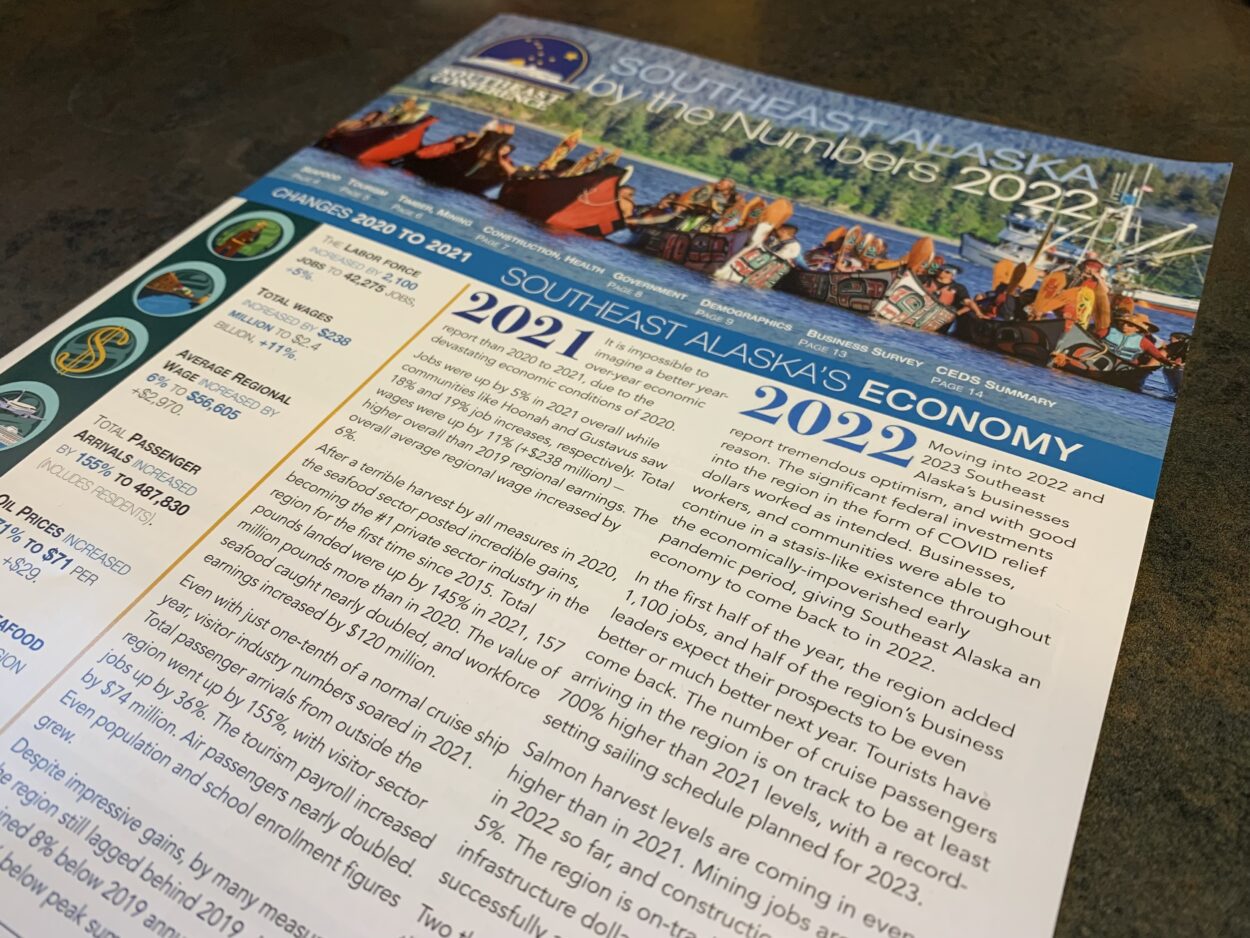
Southeast Alaska’s economy saw a massive rebound in 2021 and has continued to recover from the pandemic this year, but there’s concern that vanishing state jobs and a lack of housing could weigh on the continued recovery.
Let’s start with the good news: 2020 was so bad that just about anything looks good by comparison. Not only did the pandemic grind the economy to a halt and crush the tourism sector — it was also one of the worst years for Southeast Alaska’s fishing industry on record.
The owner and director of Rain Coast Data, Meilani Schijvens, says it’s impossible to imagine a better year-over-year recovery in jobs, wages and visitation.
“It’s so nice to be able to watch the economy bouncing back and see those job numbers coming back and those wages coming back. And there’s so much positivity looking forward,” Schijvens said in an interview on Monday.
Rain Coast Data’s latest annual report for the economic development group Southeast Conference, known as Southeast Alaska by the Numbers, was released Tuesday on the first day of the organization’s annual meeting in Ketchikan.
Schijvens says that as the tourism season winds down, she’s expecting the total number of cruise passengers in Southeast Alaska to come in at 1.05 million. That’s the fourth-highest number on record — and she says next year could be a record-breaker.
“The cruise industry itself is saying to look for a season that’s similar to that 2019 season — that was 1.33 million passengers,” she said. “But we’re going to have more ships and more sailings, so I’m expecting it to be probably our biggest season ever.”
Another highlight is the construction sector — and with federal infrastructure money coming into Alaska following the passage of a bipartisan bill last year, Schijvens is expecting another big year for builders.
The mining sector grew slowly but steadily, adding just shy of 37 jobs last year for a total of 898.
But another key part of the region’s resource industry struggled. Employment in the timber industry fell to its lowest point on record — just 312 people work in timber felling and processing. That’s down more than 90% from the industry’s peak in 1991.
Schijvens points to uncertainty about the status of the federal Roadless Rule — the Clinton-era logging restriction was lifted by the Trump administration in 2020, but the Biden administration announced plans to restore it last year. The report also notes Sealaska Corp.’s decision to transition away from old-growth logging early last year.
But the shining star of the 2021 economy was the seafood sector. It wasn’t exactly a banner year for the industry — in terms of the total weight harvested and the value of the catch, last year’s haul was just over the 10-year average. But both of those metrics more than doubled from 2020.
“It really came back and supported the economy,” she said. “Actually, in 2021, our seafood sector was our number one wage provider in Southeast Alaska. And that was for the first time since 2015.”
That’s among private sector industries. The top wage provider for Southeast Alaskans was, as usual, the government — the public sector provided about a third of workers’ total earnings in 2021.
But Schijvens says she’s worried about a growing trend: state jobs leaving the region or disappearing altogether.
“The number one item of concern that I have is watching state jobs diminish in Southeast Alaska. If you look at the last 10 years, state jobs in Southeast Alaska have decreased by 24%. That is a lot of jobs,” she said. “And those jobs are good-paying jobs with benefits attached to them.”
And she says Southeast is bearing a disproportionate share of the state job cuts under Gov. Mike Dunleavy.
“When we look at under the Parnell and Walker administrations, these jobs were really just going away. These were part of job cuts,” Schijvens said. “And in the last couple of years, we’ve seen these jobs moving to other parts of Alaska.”
According to the report, state authorities have cut 65% of the Department of Public Safety jobs in Southeast Alaska and 62% from the Alaska Court System. Jobs with the state education and transportation departments are down by about half, as are University of Alaska jobs in the region.
“We’ve got this really strong economic recovery coming in Southeast Alaska, and that’s the one thing that if those cuts continue, or something that I worry about can sort of derail that economic recovery,” Schijvens said.
Total employment in all sectors is down 12% from pre-pandemic levels across the region as of this June — in part because employers in the tourism sector can’t fill open jobs. Statewide, employment is down 6%, and across the country, jobs are up 1% from before the pandemic.
Schijvens says the lack of available housing in the region is playing prominently in the labor shortage.
“We’ve got this sort of labor-housing shortage that we’re seeing across Southeast Alaska, and I’m putting them together, because that’s how our business leaders are describing them.”
More than 60% of business leaders say rental and home prices are too high for their staff, and a similar fraction say there’s simply not enough homes on the market. The shortages are most pronounced in Hoonah, Sitka, Ketchikan and Skagway, according to the survey.
And construction is not meeting demand — Schijvens’ data shows that the number of housing units permitted and completed actually fell by 19% last year.
“We know that the cost of construction has gone up. And so maybe that has put people off, but we are seeing very low building rates for homes across Southeast Alaska right now,” she said.
Despite the warning signs, business leaders are optimistic — 79% say they have a positive outlook for next year.





